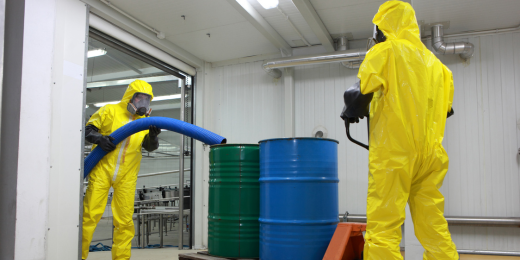The Ultimate Guide To Reclaim Waste
The Ultimate Guide To Reclaim Waste
Blog Article
Rumored Buzz on Reclaim Waste
Table of ContentsThe smart Trick of Reclaim Waste That Nobody is Talking AboutThe 9-Minute Rule for Reclaim WasteGet This Report on Reclaim WasteThe 5-Second Trick For Reclaim WasteThe Buzz on Reclaim Waste
Discover the kinds, events, and kinds of liquid waste. Residential sewage waste refers to the waste and products from a household septic system. This kind of waste is created by human beings in homes, colleges, and other buildings. This only consists of septic systems that have a drainpipe area. The appropriate administration and disposal of residential sewer waste require fluid waste to be moved to a sewage treatment plant where the correct approaches and equipment are related to purify and deal with waste.
Commercial waste usually includes potential dangers, such as flammable products or a mix of liquid and solid waste items, and needs an extra innovative and comprehensive disposal process. The disposal of industrial waste generally involves the purification of waste before transportation to make sure risk-free and appropriate disposal. Hazardous waste is produced from byproducts and runoff of commercial procedures and manufacturing.
This sort of waste can not use the exact same sewage monitoring transport or processes as septic or industrial liquids. The hazardous waste monitoring process requires the inspection and testing of fluid waste prior to it undergoes the disposal procedure (industrial wastewater treatment). Runoff waste is the liquid waste that originates from runoff and excess stormwater in very booming areas or cities
Runoff waste can cause contamination and flooding if not taken care of effectively. Guaranteeing correct waste administration can prevent catastrophes and decrease environmental injury.
The Reclaim Waste Statements
Get in touch with PROS Providers today to learn more about our waste monitoring and disposal solutions and the proper ways to care for the liquid waste you create.
(https://forums.hostsearch.com/member.php?271151-reclaimwaste1)Do you understand what takes place to your water when you end, purge the commode or drain the cleaning maker? No? Well, it's worth understanding. This so-called 'wastewater' is not just a crucial resource yet, after treatment, will certainly be launched to our land, rivers or the ocean. Made use of water from bathrooms, showers, baths, cooking area sinks, laundries and commercial procedures is understood as wastewater.

water utilized to cool machinery or tidy plant and devices). Stormwater, a kind of wastewater, is runoff that flows from agricultural and urban areas such as roofing systems, parks, yards, roads, paths and gutters into stormwater drains, after rain. Stormwater moves without treatment straight to regional creeks or rivers, eventually reaching the sea.
The Ultimate Guide To Reclaim Waste
In Queensland, a lot of wastewater is dealt with at sewage treatment plants. Wastewater is moved from domestic or industrial sites with a system of sewers and pump terminals, recognized as sewerage reticulation, to a sewage treatment plant.
The Division of Natural Resources advises local governments regarding handling, operating and maintaining sewage systems and therapy plants. In unsewered areas, city governments might require owners to install specific or house sewage treatment systems to deal with domestic wastewater from bathrooms, cooking from this source areas, restrooms and washings. The Department of Natural Resources authorizes using home systems when they are proven to be effective.
In some brand-new neighborhoods, therapy of some stormwater to remove trash, sand and gravel has begun using gross contaminant traps. Wastewater treatment occurs in four phases: Gets rid of strong issue.
Makes use of small living organisms recognizes as micro-organisms to damage down and remove staying dissolved wastes and fine bits. Micro-organisms and wastes are integrated in the sludge.
Facts About Reclaim Waste Revealed
Nutrient elimination is not available at all sewage therapy plants because it requires costly specialist tools. Clear fluid effluent produced after therapy may still include disease-causing micro-organisms - liquid waste removal.

A lot of wastewater streams right into the sewage system. Under the Act, regional federal governments administer authorizations and licences for ecologically relevant tasks (Ages) including wastewater launches that may have a neighborhood effect.
How Reclaim Waste can Save You Time, Stress, and Money.
Or else, samples are considered research laboratory evaluation. Usually many examinations are needed to establish the levels of each of the different toxins such as oils, hefty metals and pesticides in water. Monitoring supplies valid details about water quality and can verify that licence problems are being met. The information acquired through monitoring offers the basis for making water quality decisions.
Report this page